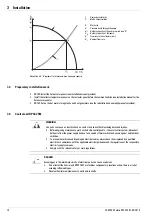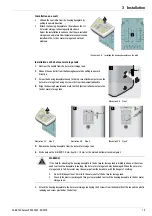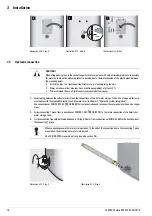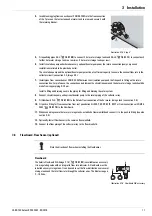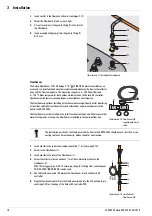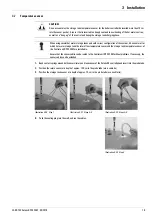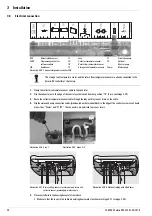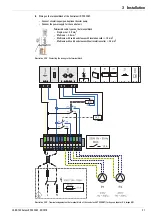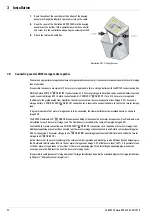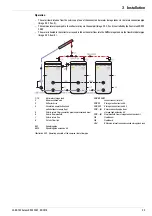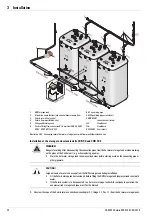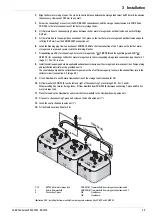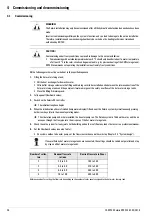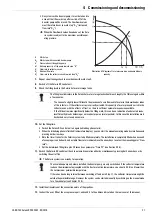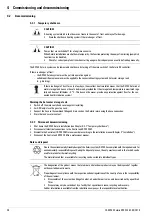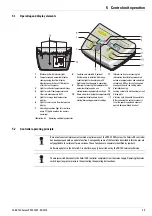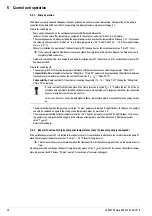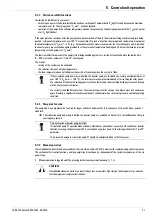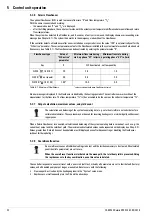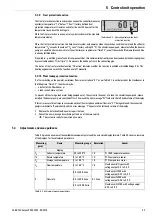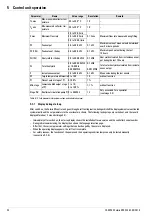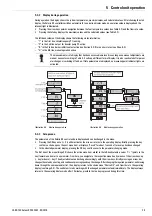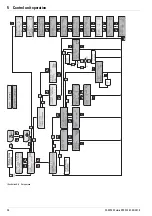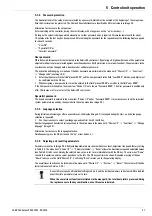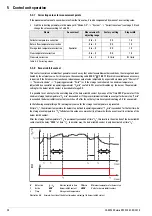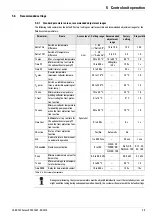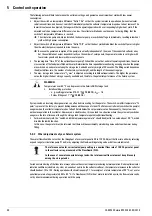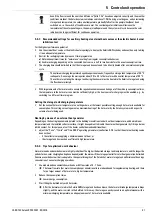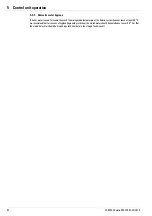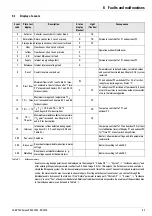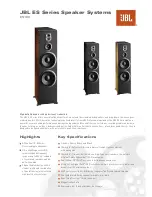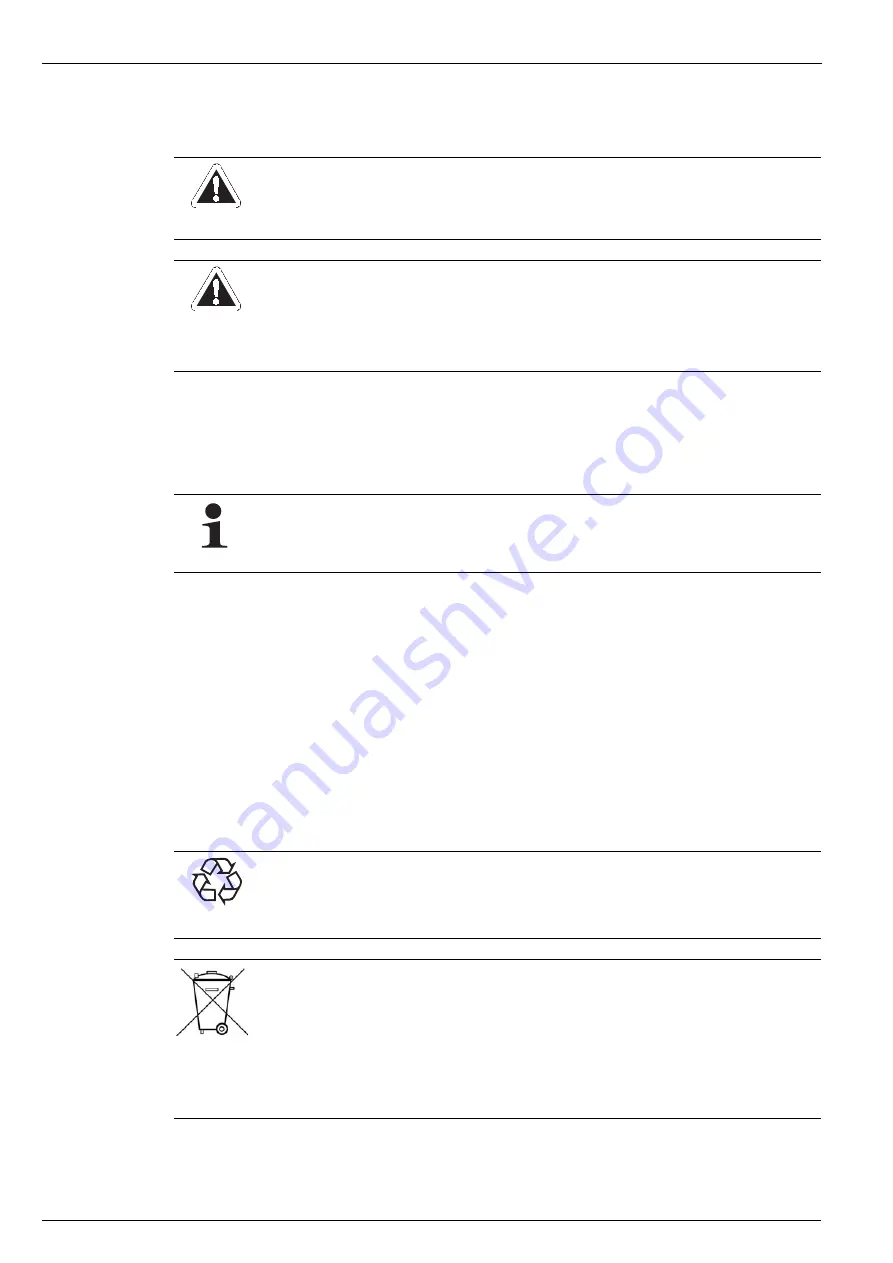
4
x
Commissioning and decommissioning
28
FA ROTEX Solaris RPS3 25M - 03/2010
4.2
Decommissioning
4.2.1 Temporary shutdown
The ROTEX Solaris system can be temporarily shut down by turning off the main switch of the Solaris R3 controller.
If there is a danger of frost:
– the ROTEX Solaris system must be put into operation again or
– suitable antifreeze measures must be applied to the connected heating system and hot water storage tank
(e. g. draining).
Draining the hot water storage tank
•
Switch off the main switch and secure against restarting.
•
For GSU only: close the gas stop cock.
•
Connect the hose to the combined filling and drain cock on the Solaris return using the hose connection.
•
Drain the tank's water content.
4.2.2 Permanent decommissioning
•
Shut down the ROTEX Solaris installation (see Chapter 4.2.1 "Temporary shutdown").
•
Disconnect all electrical connections to the Control unit RPS3 25M.
•
Dismantle the Control unit RPS3 25M in reverse order according to the installation manual (Chapter 3 "Installation").
•
Dispose of the Control unit RPS3 25M in a professional manner.
Notes on disposal
CAUTION!
A heating system which is shut down can freeze in the event of frost and may suffer damage.
•
Drain the shut down heating system if there is danger of frost.
CAUTION!
Pumps that are switched off for a long time can seize.
When Solaris installations are shut down temporarily, the function protecting the pumps from seizing (pump kick
function) is also disabled.
•
Check for correct pump function when starting up again. Seized pumps can usually be freed up manually.
If there is a danger of frost for only a few days, the excellent heat insulation means that the ROTEX Solaris hot
water storage tank does not have to be drained, provided that the storage tank temperature is monitored regu-
larly and does not fall below +3 °C. This does not, however, provide any protection against frost for the con-
nected heat distribution system!
Due to the environmentally-friendly design of the Solaris system, ROTEX has complied with the requirements for
environmentally-responsible disposal. During the disposal process, the only waste accrued is that which can be
used for material or thermal recycling.
The materials used that are suitable for recycling can be sorted into individual types.
The designation of the product means that electrical and electronic products may not be disposed of together
with unsorted domestic waste.
Proper disposal in compliance with the respective national regulations of the country of use is the responsibility
of the user/owner.
•
Disassembly of the system, handling of coolant, oil and other parts may only be carried out by a qualified
fitter.
•
Disposal may only be carried out by a facility that specialises in reuse, recycling and recovery.
Further information is available from the installation company or the responsible local authorities.

